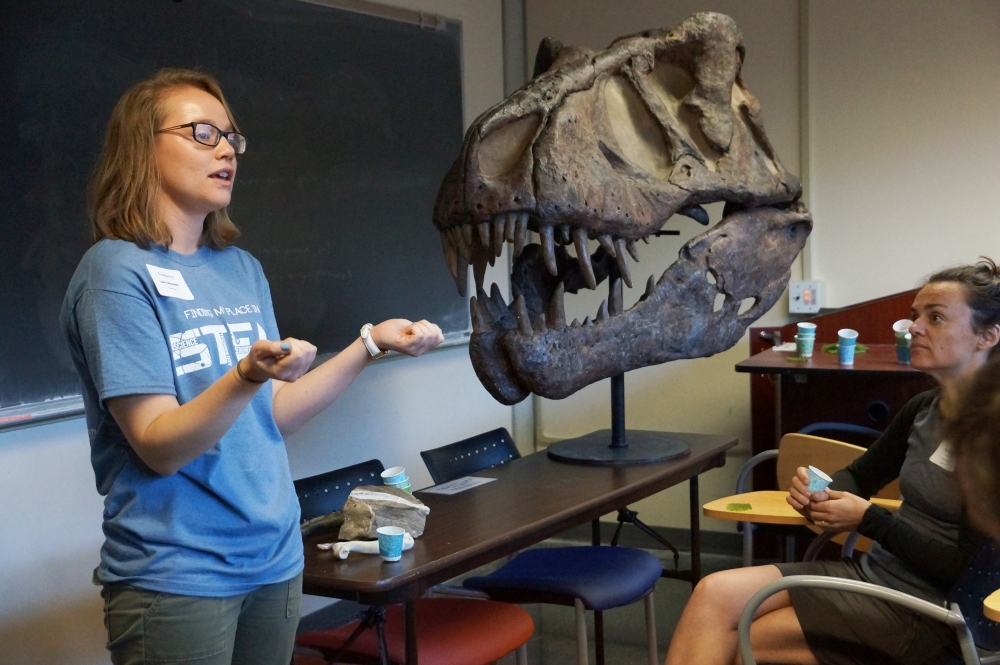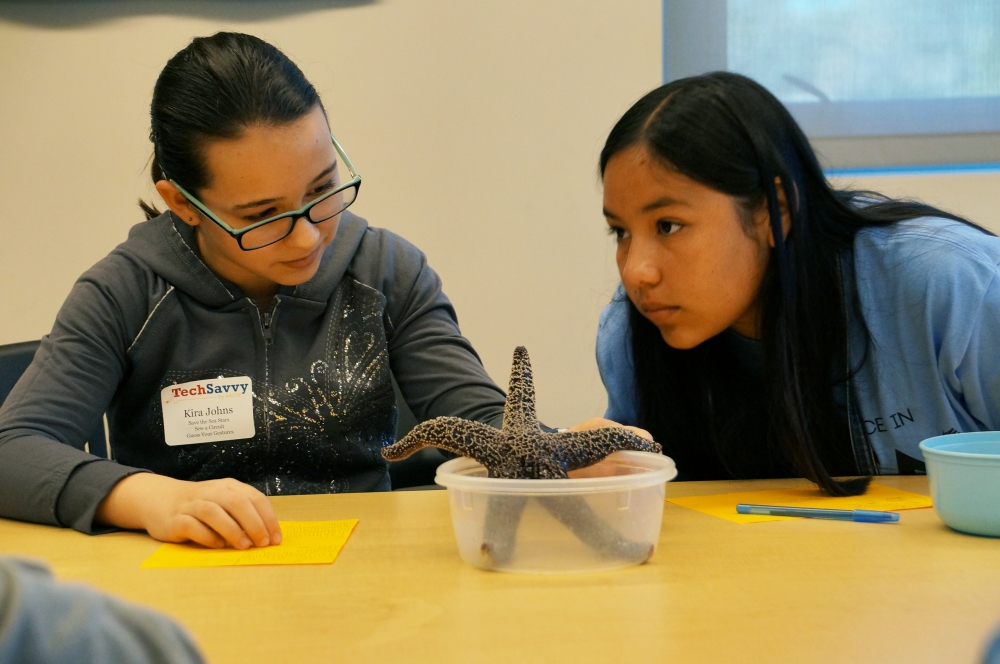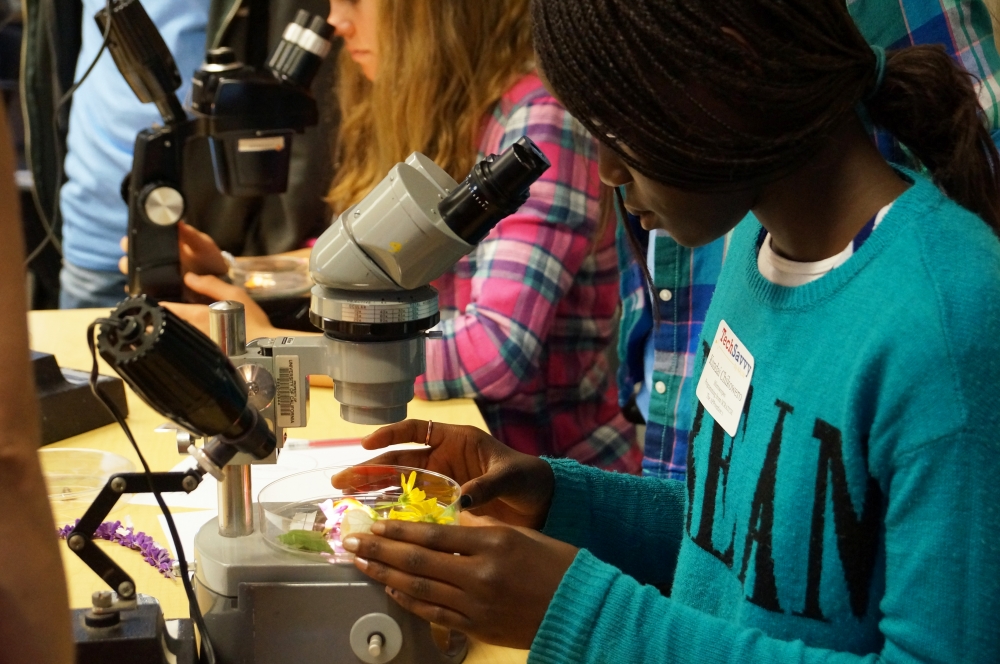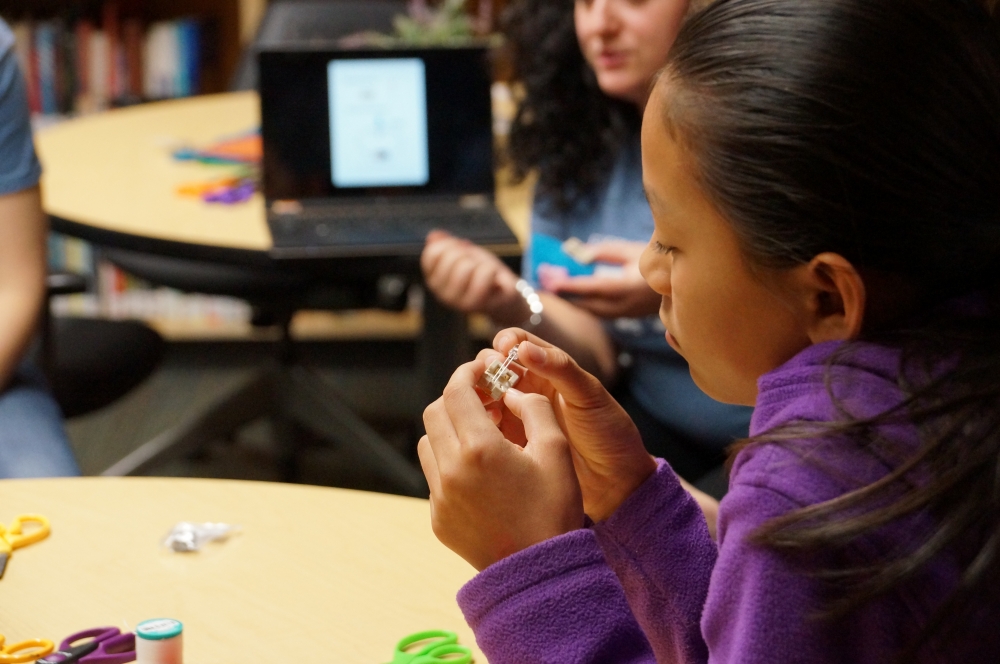Girl Power
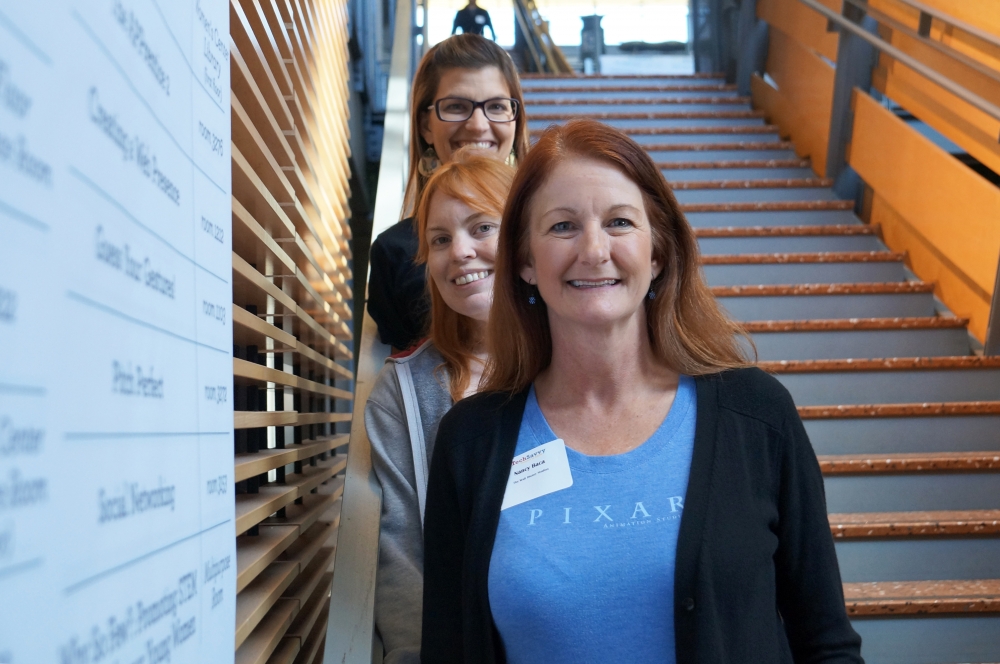
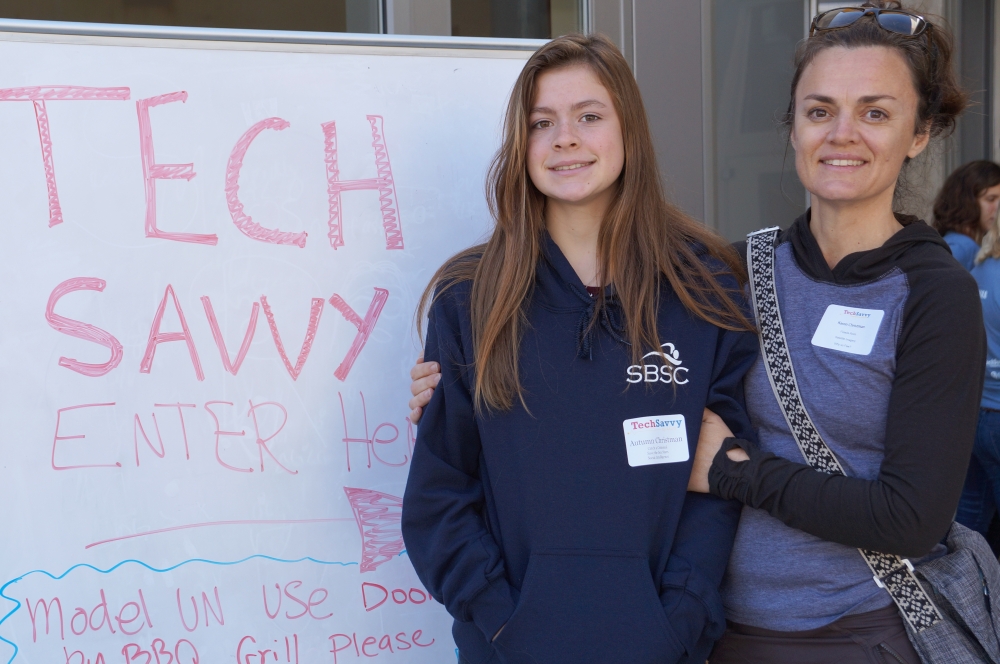
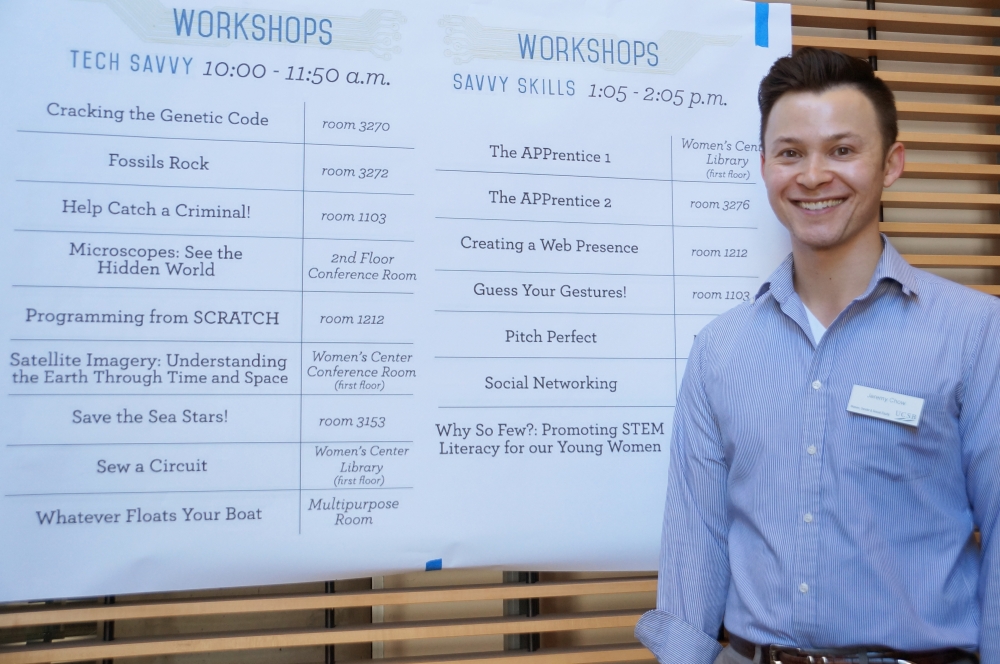
According to the National Girls Collaborative Project, elementary and secondary school girls are enrolling in math and science courses in increasing numbers. At the college level, however, gender disparities continue among female undergraduates, especially those of color.
What’s more, the gap continues on the job front, with the National Science Foundation’s 2014 Science & Engineering Indicators suggesting that females remain underrepresented in careers in science, technology, engineering and math (STEM).
A daylong conference at UC Santa Barbara sought to change that by giving girls in grades six through nine an opportunity to explore STEM education and related careers. Tech Savvy brings them together with female role models who are succeeding in these educational and professional fields.
The conference consisted of hands-on workshops, including several focused on “savvy skills” — critical thinking, opinion sharing, public speaking, and knowledge about financial literacy, negotiation and interviewing — that girls can use throughout their lives.
“Only 30 percent of the population working in technology today are women,” said keynote speaker Nancy Baca, director, product development for Disney’s Studio Distribution Technology. “In most meetings, I am the only woman at the table.”
The standing-room-only crowd listened to Baca and her colleague, Angel Stone, a technical support engineer at The Walt Disney Studios, share their individual paths to high-powered careers in technology. “There is no right path to technology,” said Stone, who completed a bachelor’s degree in cognitive studies. She also has a doctorate in computer science.
“It’s not always a hardcore science degree that leads to a technology career,” Baca added. “In fact, I would add an A to STEM for the arts because collaboration, problem solving and communication skills are also very important.”
Speaker Elizabeth Blabler of NASA Ames Research Center talked about her career trajectory, shared videos of life on the International Space Station and discussed her research. At 21, Blabler became a research fellow in the NASA Ames Academy Program and now works in the Bone and Signaling Laboratory, where she studies bone loss in microgravity.
“I’m glad they’re emphasizing soft skills,” said Karen Christman who brought her daughter Autumn to the Tech Savvy conference. “Science can be intimidating, but it’s everywhere. It’s important to know how much of what you do out there is related to science.”
Autumn, an eighth grader at St. Raphael School in Goleta, plans to pursue a career in forensic psychology. She participated in the “Help Catch a Criminal!” workshop, during which she and a dozen other girls helped figure out who kidnapped President Obama’s pooch, Bo. They used chromatography to separate the compounds in Skittles and markers with methanol to look at patterns, all of which led them to the culprit.
“It’s easy to repeat this at home with coffee filters, Sharpies and alcohol,” explained Julia Willett, a graduate student in the Department of Molecular, Cellular and Developmental Biology, who ran the “Help Catch a Criminal!” workshop. “They can grasp concepts of science in everyday life.”
Other workshops included “Cracking the Genetic Code,” in which participants extracted the DNA from strawberries. “Save the Sea Stars!” simulated a scientific experiment that involved counting sea stars in two videos taken a year apart along 40 meters of the sea floor. The girls were taught how to standardize their data by calculating the averages of two species and presenting their findings in a bar graph.
“Satellite Imagery: Understanding the Earth Through Time and Space” featured two stations, one based on space, the other on time. At the first station the girls pieced together imagery to figure out the location. For the time-based exercise, they looped through time lapses of satellite imagery, which allowed them to witness the growth of urban Las Vegas, the shrinkage and growth of glaciers and deforestation in the Amazon.
“They can really explore how the Earth is changing through this imagery,” explained Susan Meerdink, a graduate student in the Department of Geography. “It’s a lot of fun to see all these students excited about science, and I’m glad to share my enthusiasm with girls this age and maybe inspire them.”
Savvy Skills workshops included “Social Networking” run by Kimberley Ebeling, who recruits for Disney Internships, and “The APPrentice” in which small groups of girls designed their own cellphone apps.
The latter was favored by Leila Acebu, Kundai Chikowero and Priscilla Molina, sixth graders from Isla Vista Elementary School. “I can imagine seeing my name on an app some day,” Molina said.
As much as the girls enjoyed the Tech Savvy experience, so did their parents. “Looking very briefly at the surveys we received, everyone seemed very pleased and I think the speakers really addressed the important issues,” said Tech Savvy Coordinator Jeremy Chow, a graduate student who works at UC Santa Barbara’s Women’s Center, part of the campus’s Women, Gender & Sexual Equity Department. “Having parents do the workshops as well was super-effective, and it showed them the work that their daughters are doing and what they can do. So I would say it’s been very positive.”
Supported by the Women's Center and Women in Science and Engineering, Tech Savvy is a program of the American Association of University Women (AAUW). It began in 2006 at the University of Buffalo under the leadership of then-branch president Tamara Brown. Other supporters include local chapters of AAUW and Praxair. This year’s Tech Savvy is the second to take place at UC Santa Barbara. It is among 15 conferences in 2015 and is the only such event on the West Coast.
